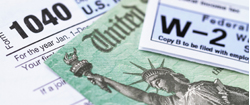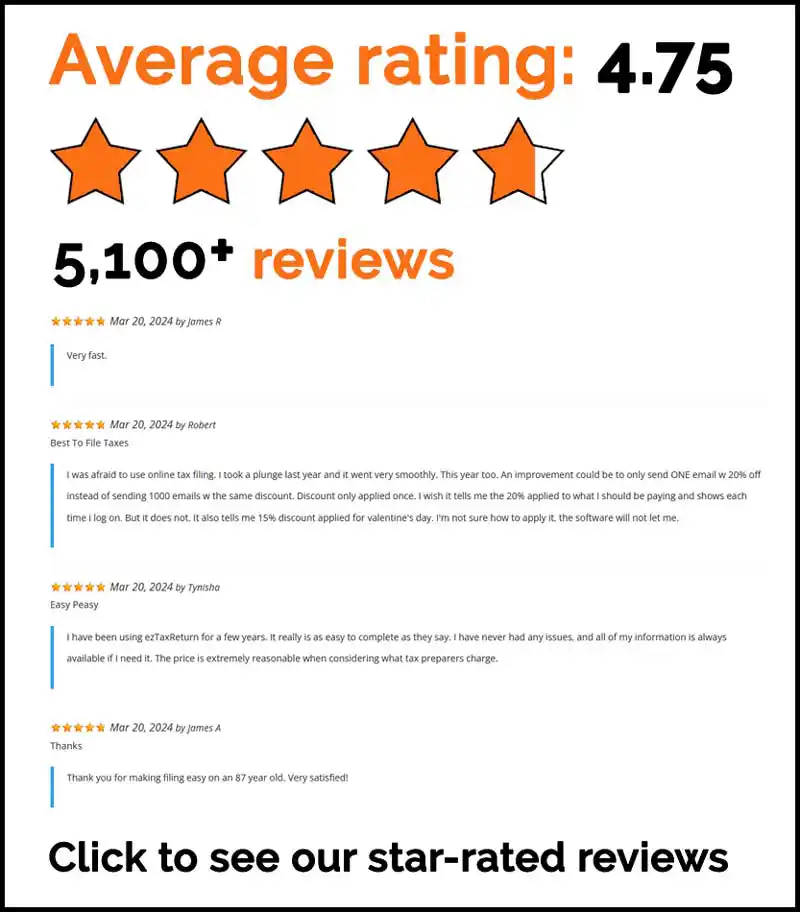The information in this article is up to date for tax year 2024 (returns filed in 2025).
Hearing aids can be really expensive, and if you’re shelling out that kind of money, you’re probably wondering, “Are hearing aids tax deductible?” It’s a great question, and the good news is, there may be some tax relief available to help with the costs. Let’s break down how you might be able to deduct hearing aids and save some cash along the way!
Key Takeaways
- Hearing aids are tax-deductible if your out-of-pocket medical expenses exceed 7.5% of your adjusted gross income.
- You can deduct not just the cost of hearing aids, but also related expenses like batteries, repairs, and even transportation to appointments.
- Using Health Spending Accounts (HSAs) or Flexible Spending Accounts (FSAs) can help manage hearing aid costs tax-free, offering significant financial relief.
Are Hearing Aids Tax Deductible?
Yes, hearing aids are tax-deductible. You can claim the cost of your hearing aids as a medical expense on your tax return if your out-of-pocket medical expenses exceed 7.5% of your adjusted gross income (AGI). This can significantly reduce the overall cost of these essential devices.
Tax deductions can lower the cost of hearing aids by approximately 35%, a significant saving given their high cost and maintenance. Not only the initial purchase but also expenses like repairs and batteries are eligible for deduction.
Figuring out these deductions can be tricky, but don’t worry—this guide will make it easy, walking you through everything from medical expense deductions to using health spending accounts.
Tax Deductions for Hearing Aids and Other Medical Expenses
Medical expense deductions can significantly reduce your taxable income, making necessary medical treatments and devices more affordable. IRS guidelines define medical expenses broadly, covering costs from doctor visits to prescription medications and medical devices like hearing aids, including potential tax deduction benefits.
Hearing aids are tax-deductible medical expenses, including not only the cost of the aids but also related maintenance expenses like repairs and batteries. To claim these deductions, your total out-of-pocket medical expenses must exceed 7.5% of your adjusted gross income.
Understanding this rule helps maximize your tax deductions and reduce overall healthcare costs. Ready to file? Let ezTaxReturn make it easy for you.
What Qualifies as a Medical Expense?
According to IRS guidelines, medical expenses include a wide range of costs related to diagnosis, treatment, and prevention of medical conditions. These expenses can range from doctor’s visits and hospital stays to prescription medications and medical devices like hearing aids. Any necessary expense for medical care expenses not reimbursed by insurance can qualify as deductible.
Payments for hearing aids qualify as medical expenses under IRS rules, allowing you to include costs for purchasing hearing aids, batteries, and repairs in your medical expense deductions.
The 7.5% Rule
To claim deductible medical expense deductions, your total out-of-pocket expenses must exceed 7.5% of your adjusted gross income (AGI). Only the amount above this percentage is deductible. For example, with an AGI of $60,000, you need more than $4,500 in medical expenses to qualify for a deduction.
Add up all your qualifying medical expenses for the year and compare the total to 7.5% of your AGI to see if you meet the threshold. If your total expenses exceed this amount, you can deduct the excess on your tax return, ensuring that only those with significant medical expenses benefit from these deductions.
Are Hearing Aids Considered Medical Expenses?
Hearing aids are considered medical expenses and are eligible for tax deductions. The IRS categorizes them as medical devices regulated by the FDA, making their cost deductible as a medical expense. This classification includes all types of hearing aids, regardless of severity or type of hearing loss.
Including hearing aids in your medical expense deductions reduces your taxable income and overall tax liability, making it more affordable to maintain your hearing health and access necessary devices.
Costs Related to Hearing Aids
Deductible medical expenses include payments for hearing aids and other necessary treatments. This covers the initial cost of purchasing hearing aids and related expenses like maintenance, batteries, and repairs. For instance, the cost of replacing hearing aid batteries can be included in your medical expense deductions.
Expenses for transportation to medical appointments related to hearing aids can also be deducted, including fares and mileage for trips to your audiologist or other hearing care providers. These costs are part of managing hearing loss and are deductible.
Documenting Your Expenses
Keeping detailed records and receipts is important for effectively claiming medical expense deductions. Document every payment for hearing aids and related expenses, including receipts for purchases, batteries, repairs, and transportation costs related to your hearing health. This will help determine if your out-of-pocket expenses exceed the 7.5% threshold of your adjusted gross income, ensuring you can claim the maximum deduction possible.
Detailed documentation will also support your claims if audited by the IRS.
Itemizing Medical Expenses Including Hearing Aids
Itemizing deductions can be more beneficial than claiming the standard deduction if your medical expenses are substantial. By itemizing, you can claim specific expenses that exceed the standard deduction limit, potentially reducing your taxable income significantly. This is especially advantageous for high medical expenses like hearing aids and related treatments.
To itemize deductions, use Schedule A (Form 1040). This form lets you list all deductible medical expenses, including hearing aids, and calculate the total amount you can deduct. Keeping detailed records of all expenses ensures accurate claims and maximizes deductions.
Using Schedule A can be more beneficial than taking the standard deduction, especially if your total medical expenses are high. Itemizing allows you to include a wide range of expenses, from hearing aids to other necessary medical treatments, maximizing your tax deductions. File with ezTaxReturn and get your biggest refund, guaranteed!
Calculating Your Total Medical Expenses
Calculating your total medical expenses is crucial in determining if you can deduct them when itemizing your taxes. Add up all qualifying medical expenses for the year, including hearing aids, batteries, repairs, and transportation to medical appointments. Compare this total to 7.5% of your adjusted gross income (AGI) to see if you exceed the threshold for deductions.
With an AGI of $50,000, you can deduct medical expenses exceeding $3,750. Therefore, only the amount above this threshold is deductible. If your total medical expenses are $6,000, you can deduct $2,250 on your tax return. This calculation is essential for maximizing deductions and reducing taxable income. Let us handle the forms and math, file now!
Using Schedule A (Form 1040)
Schedule A (Form 1040) is essential for reporting itemized medical and dental expense deductions. It allows you to list all deductible expenses, including hearing aids, and calculate the total amount you can deduct from your taxable income. Itemizing deductions ensures you claim the maximum amount possible and reduce overall tax liability.
Using Schedule A can be more beneficial than claiming the standard deduction, especially if your total medical expenses are significant. This form provides a detailed way to account for all expenses, maximizing your tax deductions.
Keep detailed records and receipts to support your claims and ensure a smooth process.
Health Spending Accounts and Hearing Aids
Health Spending Accounts (HSAs) and Flexible Spending Accounts (FSAs) offer an effective way to manage the cost of hearing aids. These accounts allow you to set aside pre-tax dollars for qualified medical expenses, including hearing aids, reducing your taxable income and providing immediate financial relief for purchases or maintenance.
HSAs and FSAs cover the cost of purchasing hearing aids and their maintenance, such as replacement batteries and repairs. Utilizing these accounts ensures all hearing aid-related expenses are covered without out-of-pocket costs, especially beneficial for those who rely on hearing aids for daily activities.
Additionally, HSAs and FSAs provide tax advantages that further reduce overall healthcare costs. Using pre-tax dollars for hearing aid expenses lowers your taxable income and overall tax liability, making it easier to manage the cost and maintain your hearing health without financial strain.
Benefits of HSAs and FSAs
Health Spending Accounts (HSAs) and Flexible Spending Accounts (FSAs) are powerful tools for managing medical expenses, including hearing aids and health spending medical accounts. These pre-tax accounts offer immediate financial relief and significant tax savings, as contributions are not subject to federal income tax.
FSAs provide the added benefit of allowing access to the entire annual contribution at the beginning of the year, which means you can cover necessary expenses right away. This is particularly useful for covering the cost of hearing aids and other essential medical treatments without having to wait for funds to accumulate.
Combining the benefits of HSAs and FSAs can make it easier to manage your hearing aid expenses and maintain your hearing health.
Eligible HSA Expenses
Before: HSA funds can be used for a variety of medical expenses, including the purchase and maintenance of hearing aids. This means that not only can you use HSA funds to buy hearing aids, but you can also use them to cover the cost of replacement batteries and repairs. This comprehensive coverage ensures that all your hearing aid-related expenses are taken care of, making it easier to manage your hearing health.
After: HSA funds can be used for a variety of medical expenses, including:
- The purchase of hearing aids
- Maintenance of hearing aids
- Replacement batteries for hearing aids
- Repairs for hearing aids
This comprehensive coverage ensures that all your hearing aid-related expenses are taken care of, making it easier to manage your hearing health.
Using HSA funds for hearing aids and related costs provides significant tax advantages. Because the money in your HSA is contributed pre-tax, you effectively reduce your taxable income by the amount you spend on these medical expenses. This can result in substantial savings, making it more affordable to maintain your hearing aids and ensure they are always in good working condition.
Other Allowable Medical Expenses
HSAs and FSAs can be used to cover a wide range of medical expenses beyond just hearing aids. This includes costs for other medical devices, prescription medications, and even some over-the-counter treatments. By using pre-tax dollars from these accounts, you can lower your overall taxable income and take advantage of significant tax benefits.
Summary
By recognizing hearing aids as medical expenses, you can take advantage of tax deductions to offset their cost and ensure you can maintain your hearing health. This includes not only the initial purchase but also related expenses such as batteries, repairs, and transportation costs.
Utilizing Health Spending Accounts (HSAs) and Flexible Spending Accounts (FSAs) can further enhance your ability to manage hearing aid expenses effectively. These accounts allow you to use pre-tax dollars for qualified medical expenses, providing immediate financial relief and significant tax savings. By combining these strategies, you can ensure that your hearing aids are always in good working condition without breaking the bank. Take advantage of these financial tools to maintain your hearing health and improve your quality of life.
File your taxes effortlessly with ezTaxReturn—get started now!
Frequently Asked Questions
Are hearing aids tax deductible?
Absolutely, hearing aids are tax-deductible as medical expenses, including costs for batteries and repairs. So, don’t forget to save those receipts!
What costs related to hearing aids are deductible?
You can deduct the costs of buying hearing aids, maintenance, batteries, repairs, and even transportation to your medical appointments.
What is the 7.5% rule?
The 7.5% rule means you can only deduct medical expenses that go over 7.5% of your adjusted gross income. So, if your AGI is $60,000, any medical expenses beyond $4,500 are fair game for a deduction.
How do I document my medical expenses?
To document your medical expenses, just save all your receipts and records for anything related to your care, like hearing aids and their upkeep. It’ll make tracking those costs a lot easier when it comes time for reimbursement or tax deductions!
What are HSAs and FSAs?
HSAs and FSAs are accounts where you can stash away pre-tax cash for medical expenses, helping you save on taxes. They’re great for covering stuff like hearing aids, making healthcare a bit lighter on your wallet.
Don’t miss out on potential savings! File your taxes with ezTaxReturn for a quick and hassle-free experience. Start today and make the most of your deductions!
The articles and content published on this blog are provided for informational purposes only. The information presented is not intended to be, and should not be taken as, legal, financial, or professional advice. Readers are advised to seek appropriate professional guidance and conduct their own due diligence before making any decisions based on the information provided.




